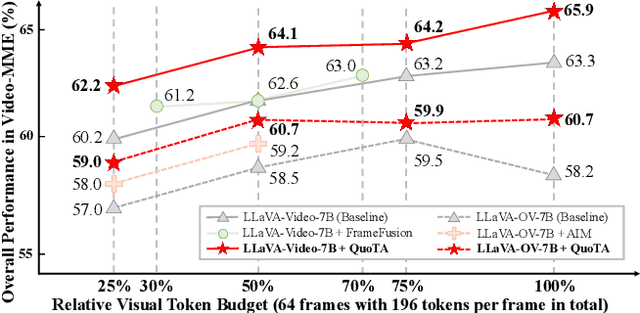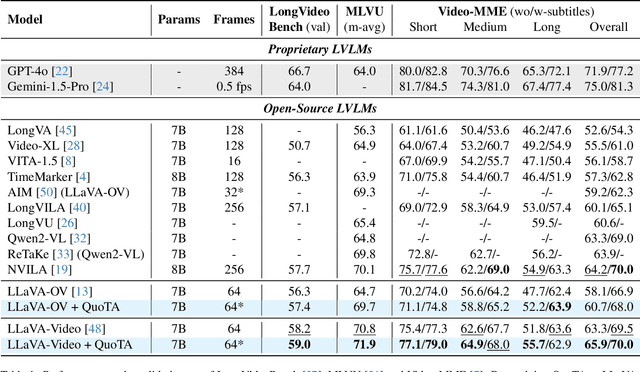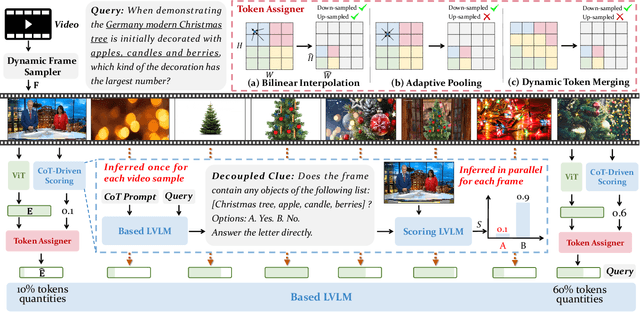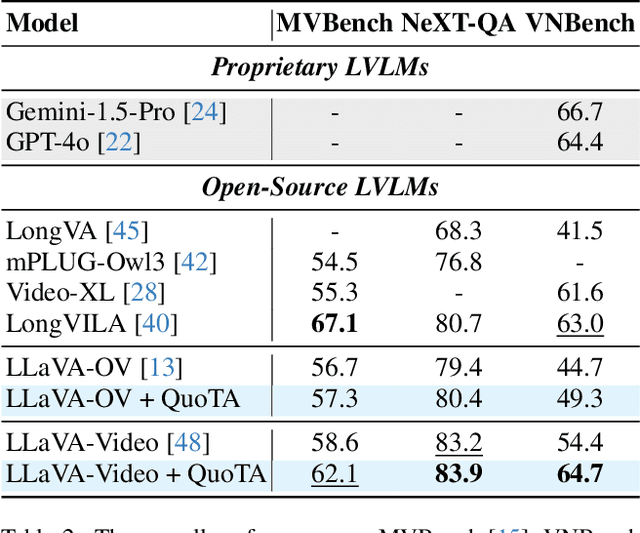Wang Chen
SMART: Scalable Multi-Agent Reasoning and Trajectory Planning in Dense Environments
Sep 19, 2025Abstract:Multi-vehicle trajectory planning is a non-convex problem that becomes increasingly difficult in dense environments due to the rapid growth of collision constraints. Efficient exploration of feasible behaviors and resolution of tight interactions are essential for real-time, large-scale coordination. This paper introduces SMART, Scalable Multi-Agent Reasoning and Trajectory Planning, a hierarchical framework that combines priority-based search with distributed optimization to achieve efficient and feasible multi-vehicle planning. The upper layer explores diverse interaction modes using reinforcement learning-based priority estimation and large-step hybrid A* search, while the lower layer refines solutions via parallelizable convex optimization. By partitioning space among neighboring vehicles and constructing robust feasible corridors, the method decouples the joint non-convex problem into convex subproblems solved efficiently in parallel. This design alleviates the step-size trade-off while ensuring kinematic feasibility and collision avoidance. Experiments show that SMART consistently outperforms baselines. On 50 m x 50 m maps, it sustains over 90% success within 1 s up to 25 vehicles, while baselines often drop below 50%. On 100 m x 100 m maps, SMART achieves above 95% success up to 50 vehicles and remains feasible up to 90 vehicles, with runtimes more than an order of magnitude faster than optimization-only approaches. Built on vehicle-to-everything communication, SMART incorporates vehicle-infrastructure cooperation through roadside sensing and agent coordination, improving scalability and safety. Real-world experiments further validate this design, achieving planning times as low as 0.014 s while preserving cooperative behaviors.
PAIRS: Parametric-Verified Adaptive Information Retrieval and Selection for Efficient RAG
Aug 06, 2025Abstract:Retrieval-Augmented Generation (RAG) has become a cornerstone technique for enhancing large language models (LLMs) with external knowledge. However, current RAG systems face two critical limitations: (1) they inefficiently retrieve information for every query, including simple questions that could be resolved using the LLM's parametric knowledge alone, and (2) they risk retrieving irrelevant documents when queries contain sparse information signals. To address these gaps, we introduce Parametric-verified Adaptive Information Retrieval and Selection (PAIRS), a training-free framework that integrates parametric and retrieved knowledge to adaptively determine whether to retrieve and how to select external information. Specifically, PAIRS employs a dual-path generation mechanism: First, the LLM produces both a direct answer and a context-augmented answer using self-generated pseudo-context. When these outputs converge, PAIRS bypasses external retrieval entirely, dramatically improving the RAG system's efficiency. For divergent cases, PAIRS activates a dual-path retrieval (DPR) process guided by both the original query and self-generated contextual signals, followed by an Adaptive Information Selection (AIS) module that filters documents through weighted similarity to both sources. This simple yet effective approach can not only enhance efficiency by eliminating unnecessary retrievals but also improve accuracy through contextually guided retrieval and adaptive information selection. Experimental results on six question-answering (QA) benchmarks show that PAIRS reduces retrieval costs by around 25% (triggering for only 75% of queries) while still improving accuracy-achieving +1.1% EM and +1.0% F1 over prior baselines on average.
SCOPE: Compress Mathematical Reasoning Steps for Efficient Automated Process Annotation
May 20, 2025



Abstract:Process Reward Models (PRMs) have demonstrated promising results in mathematical reasoning, but existing process annotation approaches, whether through human annotations or Monte Carlo simulations, remain computationally expensive. In this paper, we introduce Step COmpression for Process Estimation (SCOPE), a novel compression-based approach that significantly reduces annotation costs. We first translate natural language reasoning steps into code and normalize them through Abstract Syntax Tree, then merge equivalent steps to construct a prefix tree. Unlike simulation-based methods that waste numerous samples on estimation, SCOPE leverages a compression-based prefix tree where each root-to-leaf path serves as a training sample, reducing the complexity from $O(NMK)$ to $O(N)$. We construct a large-scale dataset containing 196K samples with only 5% of the computational resources required by previous methods. Empirical results demonstrate that PRMs trained on our dataset consistently outperform existing automated annotation approaches on both Best-of-N strategy and ProcessBench.
QuoTA: Query-oriented Token Assignment via CoT Query Decouple for Long Video Comprehension
Mar 11, 2025



Abstract:Recent advances in long video understanding typically mitigate visual redundancy through visual token pruning based on attention distribution. However, while existing methods employ post-hoc low-response token pruning in decoder layers, they overlook the input-level semantic correlation between visual tokens and instructions (query). In this paper, we propose QuoTA, an ante-hoc training-free modular that extends existing large video-language models (LVLMs) for visual token assignment based on query-oriented frame-level importance assessment. The query-oriented token selection is crucial as it aligns visual processing with task-specific requirements, optimizing token budget utilization while preserving semantically relevant content. Specifically, (i) QuoTA strategically allocates frame-level importance scores based on query relevance, enabling one-time visual token assignment before cross-modal interactions in decoder layers, (ii) we decouple the query through Chain-of-Thoughts reasoning to facilitate more precise LVLM-based frame importance scoring, and (iii) QuoTA offers a plug-and-play functionality that extends to existing LVLMs. Extensive experimental results demonstrate that implementing QuoTA with LLaVA-Video-7B yields an average performance improvement of 3.2% across six benchmarks (including Video-MME and MLVU) while operating within an identical visual token budget as the baseline. Codes are open-sourced at https://github.com/MAC-AutoML/QuoTA.
Full-Step-DPO: Self-Supervised Preference Optimization with Step-wise Rewards for Mathematical Reasoning
Feb 20, 2025Abstract:Direct Preference Optimization (DPO) often struggles with long-chain mathematical reasoning. Existing approaches, such as Step-DPO, typically improve this by focusing on the first erroneous step in the reasoning chain. However, they overlook all other steps and rely heavily on humans or GPT-4 to identify erroneous steps. To address these issues, we propose Full-Step-DPO, a novel DPO framework tailored for mathematical reasoning. Instead of optimizing only the first erroneous step, it leverages step-wise rewards from the entire reasoning chain. This is achieved by training a self-supervised process reward model, which automatically scores each step, providing rewards while avoiding reliance on external signals. Furthermore, we introduce a novel step-wise DPO loss, which dynamically updates gradients based on these step-wise rewards. This endows stronger reasoning capabilities to language models. Extensive evaluations on both in-domain and out-of-domain mathematical reasoning benchmarks across various base language models, demonstrate that Full-Step-DPO achieves superior performance compared to state-of-the-art baselines.
Multi-Task Model Merging via Adaptive Weight Disentanglement
Nov 27, 2024



Abstract:Model merging has gained increasing attention as an efficient and effective technique for integrating task-specific weights from various tasks into a unified multi-task model without retraining or additional data. As a representative approach, Task Arithmetic (TA) has demonstrated that combining task vectors through arithmetic operations facilitates efficient capability transfer between different tasks. In this framework, task vectors are obtained by subtracting the parameter values of a pre-trained model from those of individually fine-tuned models initialized from it. Despite the notable effectiveness of TA, interference among task vectors can adversely affect the performance of the merged model. In this paper, we relax the constraints of Task Arithmetic Property and propose Task Consistency Property, which can be regarded as being free from task interference. Through theoretical derivation, we show that such a property can be approximately achieved by seeking orthogonal task vectors. Guiding by this insight, we propose Adaptive Weight Disentanglement (AWD), which decomposes traditional task vectors into a redundant vector and several disentangled task vectors. The primary optimization objective of AWD is to achieve orthogonality among the disentangled task vectors, thereby closely approximating the desired solution. Notably, these disentangled task vectors can be seamlessly integrated into existing merging methodologies. Experimental results demonstrate that our AWD consistently and significantly improves upon previous merging approaches, achieving state-of-the-art results. Our code is available at \href{https://github.com/FarisXiong/AWD.git}{https://github.com/FarisXiong/AWD.git}.
Point-PRC: A Prompt Learning Based Regulation Framework for Generalizable Point Cloud Analysis
Oct 27, 2024Abstract:This paper investigates the 3D domain generalization (3DDG) ability of large 3D models based on prevalent prompt learning. Recent works demonstrate the performances of 3D point cloud recognition can be boosted remarkably by parameter-efficient prompt tuning. However, we observe that the improvement on downstream tasks comes at the expense of a severe drop in 3D domain generalization. To resolve this challenge, we present a comprehensive regulation framework that allows the learnable prompts to actively interact with the well-learned general knowledge in large 3D models to maintain good generalization. Specifically, the proposed framework imposes multiple explicit constraints on the prompt learning trajectory by maximizing the mutual agreement between task-specific predictions and task-agnostic knowledge. We design the regulation framework as a plug-and-play module to embed into existing representative large 3D models. Surprisingly, our method not only realizes consistently increasing generalization ability but also enhances task-specific 3D recognition performances across various 3DDG benchmarks by a clear margin. Considering the lack of study and evaluation on 3DDG, we also create three new benchmarks, namely base-to-new, cross-dataset and few-shot generalization benchmarks, to enrich the field and inspire future research. Code and benchmarks are available at \url{https://github.com/auniquesun/Point-PRC}.
As Simple as Fine-tuning: LLM Alignment via Bidirectional Negative Feedback Loss
Oct 07, 2024



Abstract:Direct Preference Optimization (DPO) has emerged as a more computationally efficient alternative to Reinforcement Learning from Human Feedback (RLHF) with Proximal Policy Optimization (PPO), eliminating the need for reward models and online sampling. Despite these benefits, DPO and its variants remain sensitive to hyper-parameters and prone to instability, particularly on mathematical datasets. We argue that these issues arise from the unidirectional likelihood-derivative negative feedback inherent in the log-likelihood loss function. To address this, we propose a novel LLM alignment loss that establishes a stable Bidirectional Negative Feedback (BNF) during optimization. Our proposed BNF loss eliminates the need for pairwise contrastive losses and does not require any extra tunable hyper-parameters or pairwise preference data, streamlining the alignment pipeline to be as simple as supervised fine-tuning. We conduct extensive experiments across two challenging QA benchmarks and four reasoning benchmarks. The experimental results show that BNF achieves comparable performance to the best methods on QA benchmarks, while its performance decrease on the four reasoning benchmarks is significantly lower compared to the best methods, thus striking a better balance between value alignment and reasoning ability. In addition, we further validate the performance of BNF on non-pairwise datasets, and conduct in-depth analysis of log-likelihood and logit shifts across different preference optimization methods.
Parameter-efficient Prompt Learning for 3D Point Cloud Understanding
Feb 24, 2024Abstract:This paper presents a parameter-efficient prompt tuning method, named PPT, to adapt a large multi-modal model for 3D point cloud understanding. Existing strategies are quite expensive in computation and storage, and depend on time-consuming prompt engineering. We address the problems from three aspects. Firstly, a PromptLearner module is devised to replace hand-crafted prompts with learnable contexts to automate the prompt tuning process. Then, we lock the pre-trained backbone instead of adopting the full fine-tuning paradigm to substantially improve the parameter efficiency. Finally, a lightweight PointAdapter module is arranged near target tasks to enhance prompt tuning for 3D point cloud understanding. Comprehensive experiments are conducted to demonstrate the superior parameter and data efficiency of the proposed method.Meanwhile, we obtain new records on 4 public datasets and multiple 3D tasks, i.e., point cloud recognition, few-shot learning, and part segmentation. The implementation is available at https://github.com/auniquesun/PPT.
Infrastructure Crack Segmentation: Boundary Guidance Method and Benchmark Dataset
Jun 15, 2023Abstract:Cracks provide an essential indicator of infrastructure performance degradation, and achieving high-precision pixel-level crack segmentation is an issue of concern. Unlike the common research paradigms that adopt novel artificial intelligence (AI) methods directly, this paper examines the inherent characteristics of cracks so as to introduce boundary features into crack identification and then builds a boundary guidance crack segmentation model (BGCrack) with targeted structures and modules, including a high frequency module, global information modeling module, joint optimization module, etc. Extensive experimental results verify the feasibility of the proposed designs and the effectiveness of the edge information in improving segmentation results. In addition, considering that notable open-source datasets mainly consist of asphalt pavement cracks because of ease of access, there is no standard and widely recognized dataset yet for steel structures, one of the primary structural forms in civil infrastructure. This paper provides a steel crack dataset that establishes a unified and fair benchmark for the identification of steel cracks.
 Add to Chrome
Add to Chrome Add to Firefox
Add to Firefox Add to Edge
Add to Edge